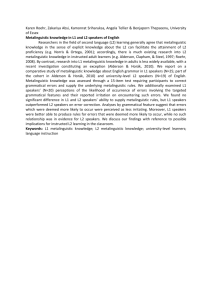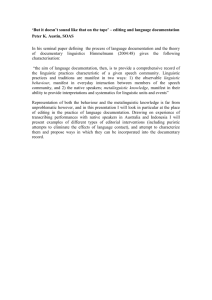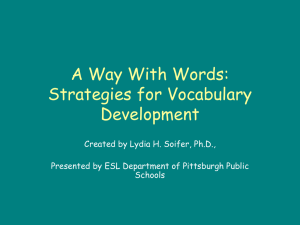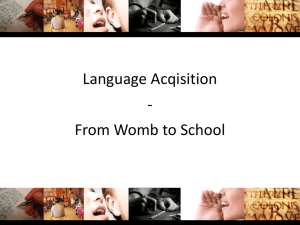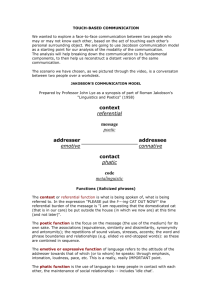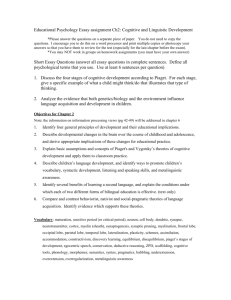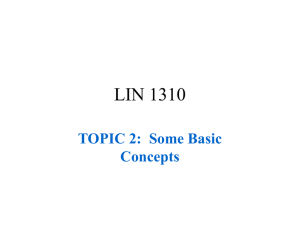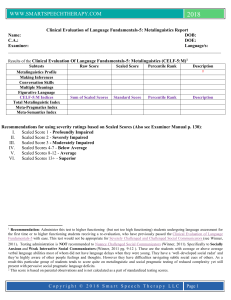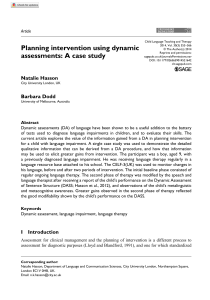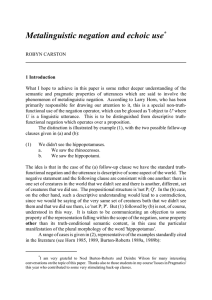The influence of the metalinguistic function on register variation in... Depending on the contexts of enunciation, a speaker uses different... language. This sociolinguistic phenomenon called "register variation" is the subject...
advertisement
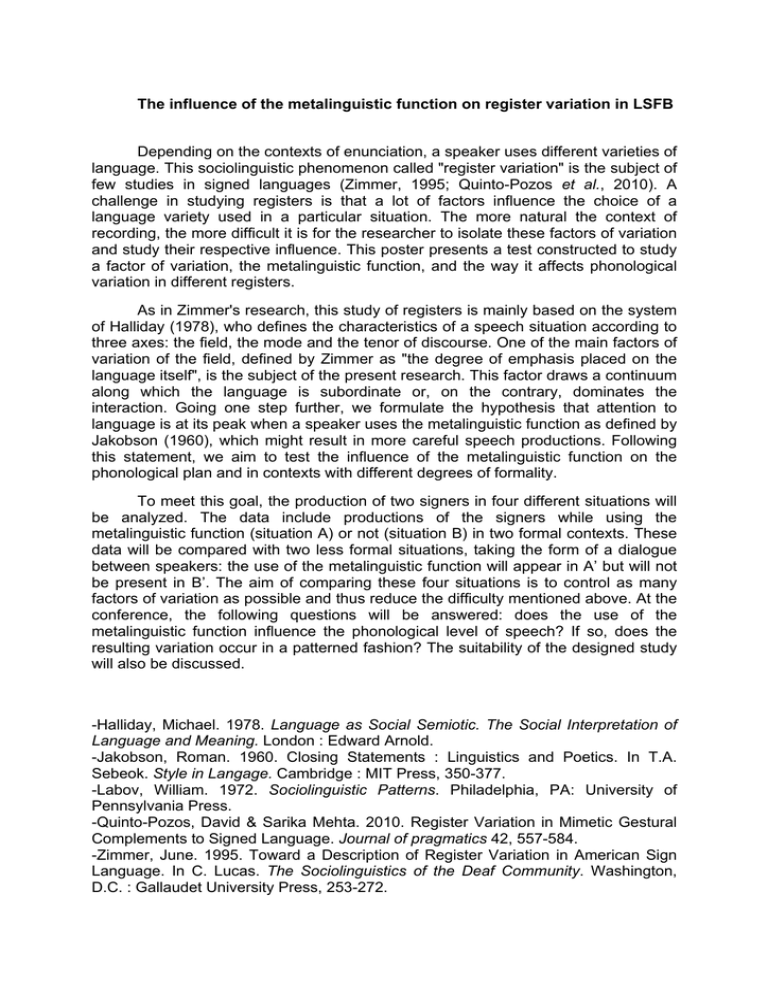
The influence of the metalinguistic function on register variation in LSFB Depending on the contexts of enunciation, a speaker uses different varieties of language. This sociolinguistic phenomenon called "register variation" is the subject of few studies in signed languages (Zimmer, 1995; Quinto-Pozos et al., 2010). A challenge in studying registers is that a lot of factors influence the choice of a language variety used in a particular situation. The more natural the context of recording, the more difficult it is for the researcher to isolate these factors of variation and study their respective influence. This poster presents a test constructed to study a factor of variation, the metalinguistic function, and the way it affects phonological variation in different registers. As in Zimmer's research, this study of registers is mainly based on the system of Halliday (1978), who defines the characteristics of a speech situation according to three axes: the field, the mode and the tenor of discourse. One of the main factors of variation of the field, defined by Zimmer as "the degree of emphasis placed on the language itself", is the subject of the present research. This factor draws a continuum along which the language is subordinate or, on the contrary, dominates the interaction. Going one step further, we formulate the hypothesis that attention to language is at its peak when a speaker uses the metalinguistic function as defined by Jakobson (1960), which might result in more careful speech productions. Following this statement, we aim to test the influence of the metalinguistic function on the phonological plan and in contexts with different degrees of formality. To meet this goal, the production of two signers in four different situations will be analyzed. The data include productions of the signers while using the metalinguistic function (situation A) or not (situation B) in two formal contexts. These data will be compared with two less formal situations, taking the form of a dialogue between speakers: the use of the metalinguistic function will appear in A’ but will not be present in B’. The aim of comparing these four situations is to control as many factors of variation as possible and thus reduce the difficulty mentioned above. At the conference, the following questions will be answered: does the use of the metalinguistic function influence the phonological level of speech? If so, does the resulting variation occur in a patterned fashion? The suitability of the designed study will also be discussed. -Halliday, Michael. 1978. Language as Social Semiotic. The Social Interpretation of Language and Meaning. London : Edward Arnold. -Jakobson, Roman. 1960. Closing Statements : Linguistics and Poetics. In T.A. Sebeok. Style in Langage. Cambridge : MIT Press, 350-377. -Labov, William. 1972. Sociolinguistic Patterns. Philadelphia, PA: University of Pennsylvania Press. -Quinto-Pozos, David & Sarika Mehta. 2010. Register Variation in Mimetic Gestural Complements to Signed Language. Journal of pragmatics 42, 557-584. -Zimmer, June. 1995. Toward a Description of Register Variation in American Sign Language. In C. Lucas. The Sociolinguistics of the Deaf Community. Washington, D.C. : Gallaudet University Press, 253-272.

